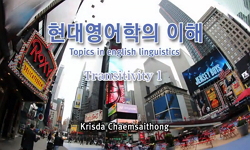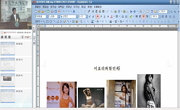The purpose of this study is to consider cognitive structure of statements that show aphoristic characteristics by grafting <Only with One Leaf> by Hyun Chong Jeong with cognitive poetics and semiotics and recognition represented in text. This s...
http://chineseinput.net/에서 pinyin(병음)방식으로 중국어를 변환할 수 있습니다.
변환된 중국어를 복사하여 사용하시면 됩니다.
- 中文 을 입력하시려면 zhongwen을 입력하시고 space를누르시면됩니다.
- 北京 을 입력하시려면 beijing을 입력하시고 space를 누르시면 됩니다.

정현종 잎 하나로 에 나타난 아포리즘적 언술의 인지적 고찰 — 그레마스 사각기호 적용을 중심으로 — = A Cognitive Study on the Aphoristic Statement Shown at <Only with One Leaf> by Hyun Chong Jeong - Focusing on Application of Greimas’ Semiotic Square Model -
한글로보기https://www.riss.kr/link?id=A106263871
- 저자
- 발행기관
- 학술지명
- 권호사항
-
발행연도
2019
-
작성언어
-
- 주제어
-
KDC
810
-
등재정보
KCI등재
-
자료형태
학술저널
- 발행기관 URL
-
수록면
121-147(27쪽)
- DOI식별코드
- 제공처
- 소장기관
-
0
상세조회 -
0
다운로드
부가정보
다국어 초록 (Multilingual Abstract)
The purpose of this study is to consider cognitive structure of statements that show aphoristic characteristics by grafting <Only with One Leaf> by Hyun Chong Jeong with cognitive poetics and semiotics and recognition represented in text. This study specifically analyzed texts using deixis of cognitive poetics and Greimas’ semiotic square. The two methods were effective in revealing structure and intention of text. Language cognitive symbol that composes the text was creating meaning with lexemes of confrontational characters. This study investigated visual effects of linguistic symbol by looking into distributional aspect of lexeme in text, and confrontational lexeme was distributed responsively by semantic paragraph. Distribution pattern of confrontational episememe was showing effective effect on generation of meaning by showing a balanced form on text. Confrontational structure of the specific episememe was ‘rise, set,’ ‘come, go,’ ‘mix, put on,’ and ‘here, there.’ Cognitive structure of text identified deixis characteristics of aphorism statement through Greimas’ Semiotic Square. This study considered in various aspects of deixis of cognitive poetics, and clearly structured unique characteristics of aphorism statement in texts by square symbols. Deixis representation of text expressed cognitive structure of coming and going here and there and far, far away by comparing things in this world with rising and falling leaves. The centrally used deixis type worked significantly in forming the semantic structure by facing spacially and visually. Lexeme that shows direct visual description on text showed cognitive structure consisting of contradictory relationship. Cognition orientation on text was perceived as cyclical aspect that can analogize circulation of creation and extinction. Cognition orientation was represented by Greimas’ semiotic square, and it was identified that the meaning of text gets expanded by synthetic deixis. Cognition orientation that perceives creation and extinction synthetically revealed a philosophical view for life by deriving episememe of truth and falsehood. In general, Hyun Chong Jeong’s poem shows characteristics of philosophical thinking, and it was identified that Only with One Leaf is strengthening the philosophical meaning using narrations that deictically nominalized life and death.
목차 (Table of Contents)
- 1. 서론 2. 대립적 언어 인지기호 3. 아포리즘적 언술의 인지구조 4. 생성 소멸의 순환적 인지지향 5. 결론
- 1. 서론 2. 대립적 언어 인지기호 3. 아포리즘적 언술의 인지구조 4. 생성 소멸의 순환적 인지지향 5. 결론
동일학술지(권/호) 다른 논문
-
- 한국언어문학회
- 정수연(Jung, Su-yeun)
- 2019
- KCI등재
-
- 한국언어문학회
- 서광진(Seo, kwang-jin)
- 2019
- KCI등재
-
학문 목적 한국어 학습자를 위한 단락 쓰기 교육 효과 연구
- 한국언어문학회
- 이지혜(Lee, Jee hae)
- 2019
- KCI등재
-
한국어 역번역문에 나타난 ‘이/가, 은/는’의 번역 양상과 그에 따른 인식 연구
- 한국언어문학회
- 허용(Heo, Yong)
- 2019
- KCI등재




 스콜라
스콜라





